8 non-woodworking tools for woodworkers

Heavy metal or easy listening.
I spent last week building a fence for my bandsaw. In the process I had to cut a few bolts to length with a hacksaw. Not really a big deal, but it made me think about what other “non-woodworking” tools I use in my woodworking. I found eight that are not traditional tools for wood, but I use them all the time.
- Hacksaw: Cuts steel for jigs and shop furniture
- Putty knife: I use it for removing glue squeeze-out. I sharpened mine on a skew to make it better suited to get into tight spaces, but you can buy knives that are already skewed.
- Wax paper: It’s great for protecting my benchtop during a glue-up.
- Scissors: They cut the wax paper (and other paper goods) to size.
- Flashlight: My shop has some dark corners and crevices; the flashlight helps me find dropped screws and other hardware, which always seem to roll into those dark areas. The light is also useful to help me see if I have gaps in joinery, like through dovetails (my eyes ain’t what they used to be, and they weren’t much to start with).
- Sill sealing insulation: I had a roll of this left over from a home project. I tape this stuff to my benchtop to cushion a workpiece as I put the final touches on it (chamfering edges, smoothing) or finish it. I’ve also wrapped finished work in it for transport.
- Radio/CD player: Gotta have some tunes, though it’s also nice to listen to a baseball or football game, too.
- Coffee mug: Gotta have some caffeine.
What non-woodworking tools do you use?


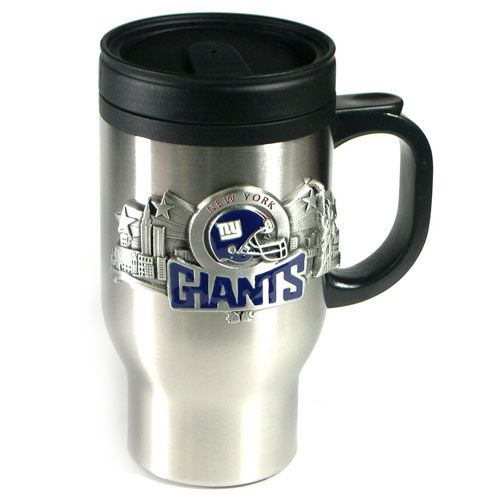
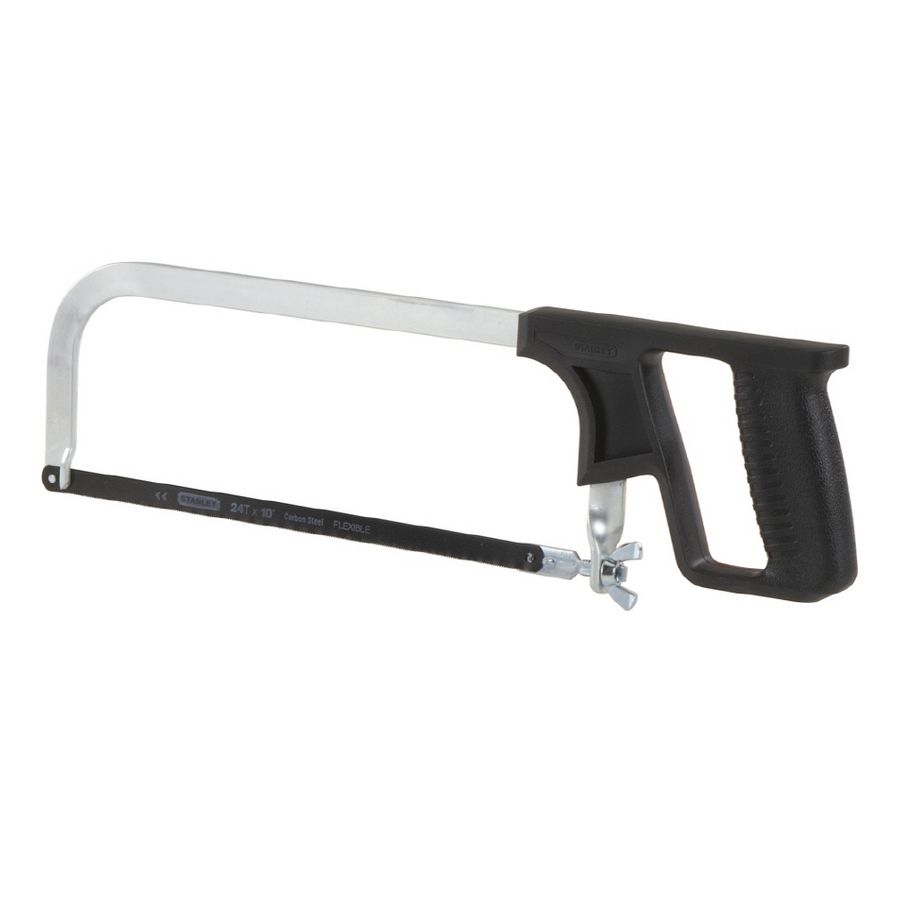
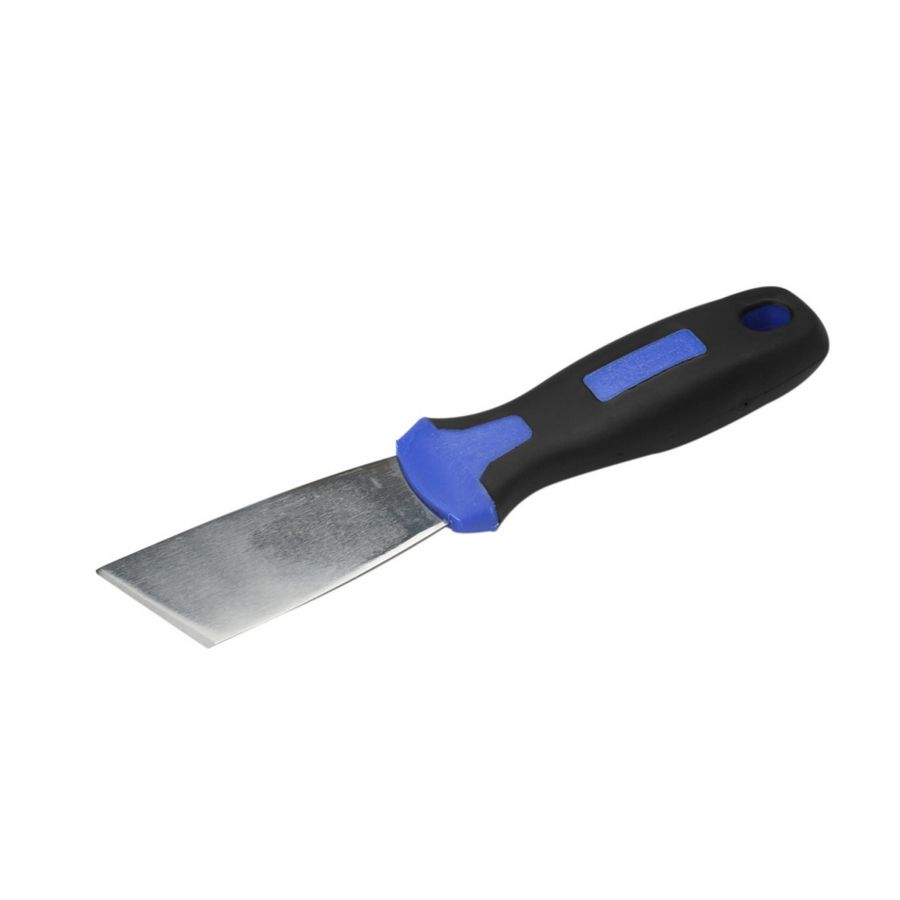
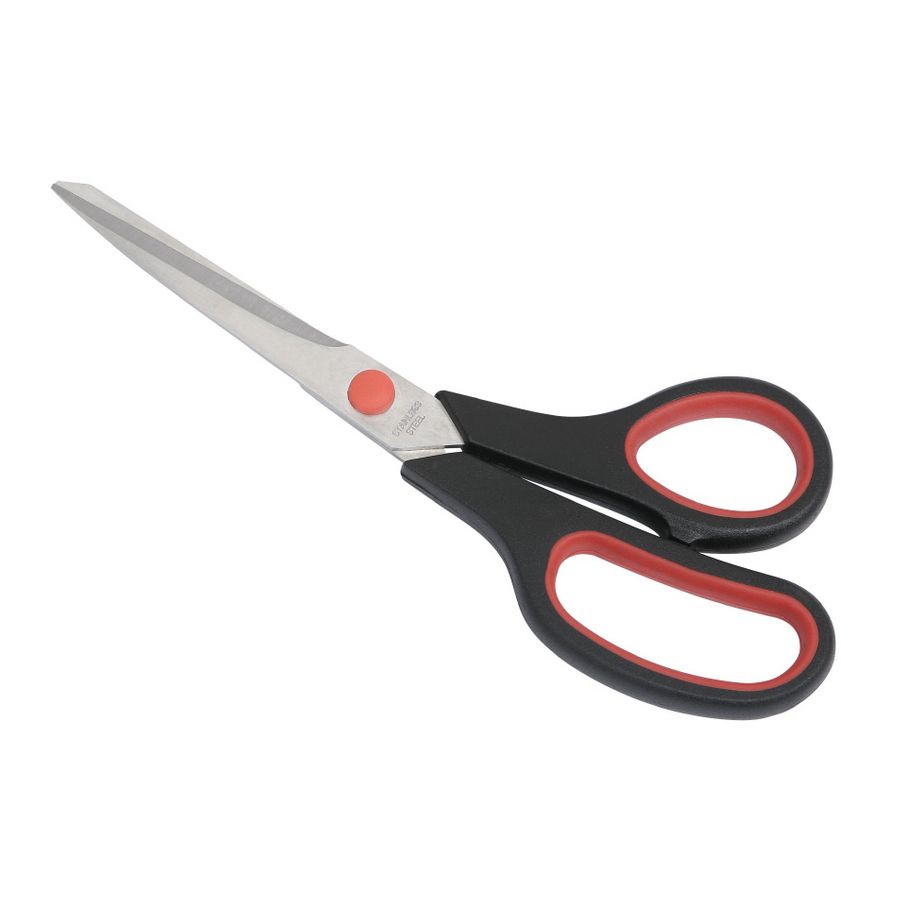
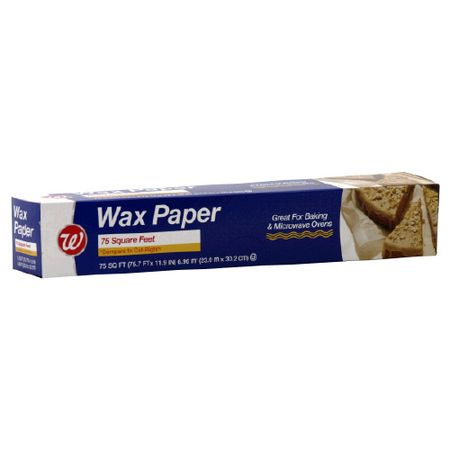
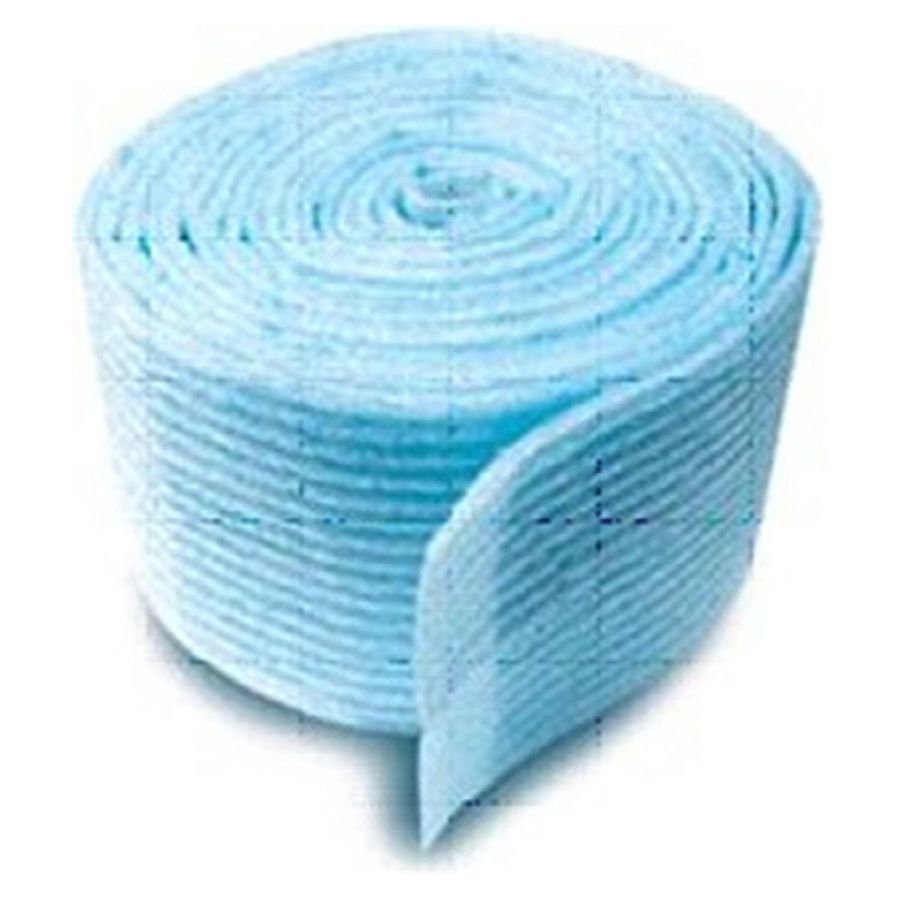
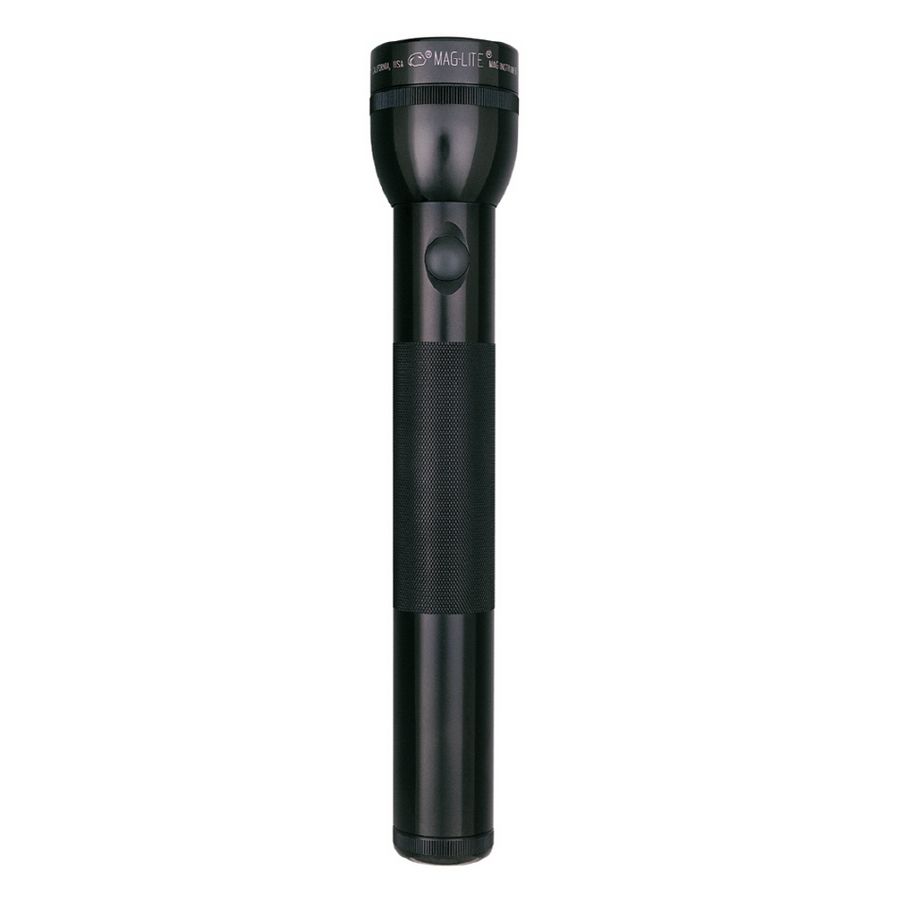

















Comments
I'll be using the sill sealing insulation.
Thanks !
I use a painters 5-way tool for scraping glue up and also use it to pick up paint drips when finishing. Rockler sells this expensive Hyde for $9.49 but I usually buy cheap ones at the home center. They clean up easily with a wire brush and sharpen nicely with a bench grinder (more non-woodworking tools, eh?).
Some of my personal non-woodworking favortie tools are:
1> Paraffin Wax; for rubbing over the soles of a bench plane so that it slides better
2> Postal Scale; for acurrately measuring shellac flakes
3> Hot Plate; for use in steam bending, sand shading and hide glue
4> Cast Iron Skillet; for sand shading
5> Canning Jars; for keeping shallac, dyes and stains in
6> Tea Kettle; for steam bending
7> Socket Set; for tuning up machines
8> Sirius Sattellite Radio; because commercial radio blows
1) Autobody metal working hammers - their narrow size is great for light taps in hard to reach places.
2) Autobody Cheese grater - for hacking away at wood filler or putty on big repairs.
3) Christmas light remote on switch to turn on dust collector.
4) Maxwell house coffe containers (the large kind) - great for throwing out screws and nails in, so I don't get a flat. They have a handle so they are great for putting paint or stain in too.
5) Brother P touch labeler
6) Coffee - but needs to be the dixie disposalable cups with lids...I drank too much sawdust already.
7) a sharpee - I don't know why, but I am always looking for one to write with..on old paint cans, the sides of the paint thinner and turpentine cans, on my zero clearance inserts, etc...
8) Magnets - make great stops on my band saw table
9) Playing cards - make great spacers. Get a bunch of cards and use a micrometer to group up .25" or .5" worth anduse them for quick set ups....if it is not exact, you'll be off by only a very small amount.
10) Ipod with Bose docking station (preferibly playing blues or rockabily)Need to hear the tunes over the dust colelctor !
Plastic squeeze bottles are a must for holding liquids such as Tru-oil, mineral oil, lemon oil, orange oil, mineral spirits, denatured alcohol, isopropyl alcohol, stains & dyes, etc. I find the clear 8 ounce bottles from Rockler are great! Build a rack to hold then on the back of your bench and you will find what a great convenience they are.
Oh, be sure to label them least you forget what is in them and screw up a project. Been there, done that!
Wow, these are all excellent ideas. I can't believe I forgot the Sharpie!
I dunno...is a vernier a woodworking tool? When I started using one a couple years ago it put a whole new "focus" on the accuracy of my work and tools.
Davie, if you use it, it's a woodworking tool...
Angle grinder, Metalworker's Vice, Arc Welder.
That way I can cut down bolts to the exact size I need, make long bolts from threaded rod and a nut, and make my own shelf brackets.
Tom... My favorited non-woodworking woodworking tool is one I just discovered a few weeks ago by accident. I was cleaning my garage, when I put a 20" oscillating fan on the end of my bench to get it out of the way temporarily. I forgot to put it back, so it was there the next time I needed the bench for woodworking. I was doing a routing job. Instead of putting it away, I plugged in the fan, turned off the oscillator, and placed it focused on my workpiece, about a foot away. I routed away and watched wood chips get blown to the side instead of up at me or hanging out blocking my view. I like it even better when I'm sanding, especially with a random orbit sander. Sawdust is blown to the side (blown in the direction of my air scrubber), while I get clear views of my work and clear air to breathe. Don't know how I lived without it.
iPod for tunes; there is an app for the iPhone that helps track time spent on a project as well as expenses.
» Camera, obvious, for posterity.
» Welding iron, to date my projects.
» Rubber stamps, to sign my projects.
» Mechanic's vise, for shaping hardware and sharpening small tools.
» All sort of wise-grips, to shape hardware.
» Electician wire cutter, to nip off and/or renove brads.
» Babies wipes, to clean messes, and my fingers of course.
» Car jack, to lift/move heavy tools.
» Handheld make-up mirror, to check inside joinery.
» Mechanic's magnetic tool trays, to keep small parts safe on the workbench.
» Drafting swing-arm lamps (5), to lite when precise joinery is involved.
» Cloth pins container, to keep my rags handy and from getting dusty.
» Drafter's French curve set, to enhance my designs.
» Engineer's ruler, to make scaled plans.
» Credit cards, to spread all kinds of glue.
» Food cans, to use as risers, like when installing shelves.
» Cooking Pots&Pans nylon scrubbing pads, to remove squeezed out glue.
» Dairy product lids, to mix epoxy and to use as scoop to pore PVA glue in to soak my acid brush.
» Household iron, to install pre-glued edge bandings.
» Anvil, to shape/reshape hardware.
» Auto boby round head hammer, to shape/reshape hardware.
» Kitchen timer, so I won't forget cordless tool battery recharging.
» Tooth brushes, to spread out glue and to brush off all kinds of bits after use.
» Garden gloves, to manipulate rugh wood, particularly at the jointer.
» Kids pencils sharpener, obvious.
» Clip boards, to hold sketches and plans.
» Platic straws, to clean squeezed out glue at the intersections of two meeting pieces at 90°.
You're right Tom, non-traditional!
Best,
Serge
I've found my digital camera to be a big help when re-modeling our house & running wiring. I can fit it into a small opening (wall outlet) and take a photo inside the wall to see if I've put a hole in the sill or if I've put it in the wrong place. It also will help if you have a jam on your wire pull to indicate a problem with your pull B4 you pull everything out and try to adjust the pull again.
My shop is in a 12*18 shed. So my favorite non-woodworking tool to help de-dust it is my leafblower.
Short, stocky wide-mouthed jars for holding glue. With a Workshop in garage in Texas, one has to think about keeping liquids from going bad due to the heat. Keep small amounts in shop. (9 straight 100+ degree days at one pint this year). The rest of the bottle stays in storage in A/C'd house.
And a good choice for showing a NY Giants coffee mug!! Transplanted NYers.
I have several old mouse pads with soft surface (not the vinyl ones)that I put under a sanded surface to keep it from getting scratched when I sand the other side. I also use an old beach towel for the same purpose for large sizes.
Bungee cords looped through bench dog holes hold my shop vac hose in place when sanding (Don't have a DC yet).
I have several old mouse pads with soft surface (not the vinyl ones)that I put under a sanded surface to keep it from getting scratched when I sand the other side. I also use an old beach towel for the same purpose for large sizes.
Bungee cords looped through bench dog holes hold my shop vac hose in place when sanding (Don't have a DC yet).
Vacuum food saver to store small cans of finish, tubes of caulk, glue etc.
I frequently use my South Bend 9A Lathe not only to turn wooden parts, but to make special metal hardware, bushings and trim bolts to length. I have also made a complete set of guide bushings for my router using 1/4" plexiglas disks cemented together to build up the appropriate thickness then turned and bored to the required size, threaded and held in place with a plexiglas threaded ring.
I like to use a plastic mayo squeeze bottle with a slotted opening for squirting glue into a biscuit hole. The opening is about 3/4" wide and with a little practice (turn slightly)I can lay a very consistent glue path down the edge of a board. And the price is right!
Larry
Insect repellent spray for the zillions of spiders, plus the occasional scorpions & centepedes in my shop
Wasp & hornet repellent - also works on carpenter bees
Fire Ant insecticide
Water bowls for my hound dogs who hang out in the shop
Dehumidifer (hey, I'm in GA!)
Paper towels & dispenser
Dremel tool & bits for small detail work
Cell phone to call my wife upstairs (when I need a 3rd hand, and it's also smart to keep one handy in case of an accident in the shop)
Empty kitty-litter buckets w/ lids for storing clean shop rags
Metal popcorn tin (large size) w/ a tight-fitting lid w/ some water in the bottom for dirty rags until they're disposed of properly
Smoke & Carbon Monoxide detectors, plus extra batteries
Fire extinguisher for both chemical and regular fires
Vented bucket of rusty iron & steel incl old hinges, bolts, nails, steel wool, etc. plus vinegar to ebonize white oak
Distilled & filtered water to make my own water-based stains
Touch up paint brushes type used in scale model-making
Q tips for applying glue in dowel holes
Playing cards for temp. shimming fences, jigs, etc
Duct-taped bricks for weights when doing certain glue-ups
Magnetized mechanics pick-up tool on a wand to find tiny screws, etc under the bench
Flashlight (@ the floor level) if the above technique fails
Bungie cords
Permanent markers to write down the wood type on the end of rough-sawn lumber
Paper-mate 'Sharp Writer' mechanical pencils - have a very fine point & reasonable durable lead, and they're inexpensive, too
Colored chalk to temp mark lumber
Home-made trammel using a paint stirrer w/ a sheetrock screw in one end, and a hole for a pencil in the other
Rubber finger tip protector when using X-acto knives, razor blades, and when sanding very small parts
Toothpicks for applying CA
Old shot glass used as an open dispensor when working w/ CA
Accelerator to instantly bond CA
Wooden block w/ a blind hole - use a Forstner bit - to hold small bottles of glue, paint, or stain- won't tip over on bench or on a project
Masking tape (blue painter's type) to hold miters closed, and also to prevent glue from getting on parts being glued together - such as inside of a cabinet or a bookcase
Empty veggie, soup, or coffee cans to store polyurethane glue bottles upside down, so that the air in the bottle is at the bottom, and not at the top
Rubber bands for misc lightweight clamping operations
Clothes pins to hold small parts for gluing & painting
Rubber gloves (w/out powder) for holding part being spray painted
Zip-lock sandwich bags to organize small parts together - also write what they're for on a paper and stick it inside the bag
Soldering hold down T-shaped pin to clear the plugged-up nozzles in glue bottles
Wire nuts to seal the end of opened tubes of caulk
Manila folders in a filing cabinet or metal box, for sketches, drawings, details, & plans - sorted by project
Coffee stirrers snatched from Starbucks for mixing 2-part epoxies, small bottles of stains & paints, and for motise glue-ups
Tooth brushes for dusting off saw dust prior to glue-ups of small parts
Another old tooth brush for applying glue - esp on edges
Food dehydrator for speeding up drying times of enamel painted pieces - 8 hrs instead of a week or more
Bandaids for the inevitable
I hate tracking cords to be sure I unplug the one I want so I keep a variety of colored plastic tapes. I use the same color to tape by the tool and by the plug so I know which one "matches" the tool I want to unplug. Good for extension cords if they are the same color.
I use a old kitchen lazy susan in the shop. It is great for painting and getting all sides without walking around to get at all angles.
I use an accordion file to store sandpaper, it keeps the sheets flat and easy to file. There is also room for a few sanding blocks and a flat sandpaper ripper. The 5 in 1 painter's tool is another favorite.
Great tool/cord plug idea, woodmom. I did that in my home office, of putting ID tags on the 20 or so plugs there, but never carried that over to the shop. The things we learn from sharing! Thanks.
Popsicle sticks... they're perfect as stirrers, glue spreaders, shims, and they are the same size as a thin-kerf table saw blade, good for jig set-up.
Masking paper
I use masking paper which is 3'x60' to protect bench tops. It is thick and absorbs all liquids stands wp well to minor pounding.
So many great ideas here! Most of mine are already mentioned, but I'll add a few more:
- Meat trays for sorting hardware and keeping parts from rolling away.
- Dry erase board and markers for drawing up new ideas and writing shopping or to do lists. Kids love our "design sessions" for new projects.
- Three ring binders with clear document holders for organizing owners manuals, instructions, etc.
- Brown kraft paper on a roll for small projects. It keeps the bench clean and gives you a place to draw, write measurements, layout parts, etc.
- READING GLASSES!
- Gloves - I never wear 'em while using tools, but I almost always wear gloves when unloading the truck, loading wood, transporting tools, etc. I hate splinters and sharp metal edges!
- Tweezers (see "splinters" above!)
- ziploc bags in many sizes
- sharpie
Hi All,
My workshop combines engineering and metalwork equipment, i.e. lathes saws, engineering measuring tools, etc., as well as woodworking equipment such as lathes, drills, bandsaw, carving tools, docking saws, etc. I find many of the engineering tools also useful in woodwork.
One other tool I find useful is a block and tackle suspended from the roof truss. I find at 76 with a bad back and hips I am unable to work comfortably at ground level so lift whatever I am working on to a bench or temporary bench so I do not have to bend.
All of the other suggestions made by other members I am familiar with and heartily concur with their listing.
Regards
Some of these suggestions are great, like the mouse pad, the mayo squeeze bottle and Wire nuts on caulk tubes.
Some are just stupid. A Coffee mug is a tool? a fire extenguisher? smoke detector? C'mon! That's as sensable as "I use elctrical outlets, I find it makes the power tools work better when you switch them on"! I have them all over the shop!" C'mon!
Here's a tip. I've found sanding pads at my local woodworking store to be somewhat overpriced and typically undersized. You can find the same type of pads at Bed Bath & beyond sold as shelf linning and dinning room table pads.
They're large enough to fit your entire bench, at 1/4 the price. Cut to size to fit your needs. Save the small scraps,
you can use them as coasters under your woodworking coffee mug tool.
4'x 8' sheet of styro foam makes a great platform for cutting sheet goods. Used under a sheet of plywood before cutting it provides a buffer zone for your blade, keeps the ply flat stable, and reduces tear out, pinching & kick back.
I've cut mine down to 4, 24"x48" pieces. Makes them easier to store, easier to setup and I only need to grab one or two sections when cutting smaller pieces of stck.
Peace
Brad
In my woodshop -
* coffee machine for heating hide glue
* pop sticks for mixing/glue spreading/stirring
* rubber grippy mat from a $2 store for sanding or cushioning jobs
* anvil for reshaping
* length of water pipe for heat bending
Cheers
Emery boards - the kind used for filing your fingernails - excellent for sanding small items or hard to reach areas.
An assortment of drywall taping knives. Essential for spreading drywall joint compound on your wood projects to produce a smooth finish before stain and varnish.
A refrigerated air dryer for your compressed air system. Lots of people think a water separator or filter do the same thing, but this is not true. Without one, your compressed air is at 100% humidity and condenses water with any pressure drop, like when you start using your tools.
A well-stocked beer fridge. Essential after the days work is done.
I use both sizes of the cheapie utility knives both ot cut with and as mini scrapers. The ends make great mini scrapers and if it gets dull, brake off the last segment and it is sharp again. the blade is also flexible when extendeed ... works great to shave off glue squeezout before it sets up hard. I also keep denatured alcohol handy in a squirt bottle. That will remove glue residue if it accidently gets on work surfaces, and it will remove sharpie markings if I change my mind or they become irrelevant. I use peanut butter jars for small parts. They are transparent and won''t break if dropped.
I have a ground steel bar, 3/4" X 1 1/2" X 36". Fits perfectly in miter slots for settng up tools, table to blade, fence to blade (I set mine at .004" open on the outfeed end). Best tool I know of for setting infeed and outfeed rollers on a planer. Snipe can mostly be elminated with accurate setup. Use to set and check jointer tables. Great straight edge and weight when cuting veneer. I got mine from use-Enco.com many years ago for about $35. No doubt it is more now but well worth the money. Note: Store it in oiled paper to protect the finish.
A couple of non-woodworking tools I use in my shop:
18" cooling fan: my garage shop gets hot in the summer!
Coffee cans: not unusual I'm sure; I use them for storing volatile rags until they can be properly disposed of.
Rubber/polyvinyl drawer liners: make great mats for keeping a work piece still on the benchtop for operations such as sanding.
Wax Twine
I started using Wax Twine years ago to lace telcom cable bundles together. Using a double loop cinch knot you can clamp odd shapes together with amazing force. A double loop truckers knot can apply even more force. Think of the way a block and tackle works. The wax helps the twine slide tight and holds the knot once it is tightened.
When I make mineature oak barrels, several seperate rounds of Wax Twine are a good clamping method to pull in the staves a little at a time in each round. When I am tightening up the legs of an old chair, wax twine does the clamping without making marks in the finish.
In the last 30 years I have found endless uses for this material. In my opinion it is more versital than duct tape.
It's available at Graybar Supply. The thinner the twine, the better as you can always double it up.
Galvanized oil drip pan... the kind you put under old cars that ooze a little oil now and then.
For what, you ask? Mine is 24x36 and 1/2" deep. It fits perfectly(upside down) on top of my router table. My garage, er, shop is used for many types of work not just woodworking and my custom metal cover protects it from 'other' mechanical work.
Wax Twine
I started using Wax Twine years ago to lace telcom cable bundles together. Using a double loop cinch knot you can clamp odd shapes together with amazing force. A double loop truckers knot can apply even more force. Think of the way a block and tackle works. The wax helps the twine slide tight and holds the knot once it is tightened.
When I make mineature oak barrels, several seperate rounds of Wax Twine are a good clamping method to pull in the staves a little at a time in each round. When I am tightening up the legs of an old chair, wax twine does the clamping without making marks in the finish.
In the last 30 years I have found endless uses for this material. In my opinion it is more versital than duct tape.
It's available at Graybar Supply. The thinner the twine, the better as you can always double it up.
I use a 700 pound welding jig table when the wood project has to be REALLY aligned perfectly. The top is steel, just over 4' X 4', Blanchard ground and 1" thick. The top pivots in 3" trunions from dead flat to 90 degrees to the floor so I can use it almost like an easel. Great to use, hard to move.
I use a 3cc syringe with a 14 ga. needle to get glue into tight places, just grind the tip off. don't cut it (crushes the tube) also use forceps to hold small pieces and the rubber tourniquet hat is use for starting iv's works great for holding funny shaped parts togather, both for dry fitting and glue up
I know that this sounds crazy and that I will never admit to it, but a stick of red lipstick is always in the install toolbox..
It is great for marking outlet boxes and plumbing cutouts on the back of cabinets. Simply applying the lipstick on the protruding item and pressing the cabinet onto it, you have a great layout line for cutting.
Just don't ask your new helper to get it out of the toolbox....
How about spring clothespins for clamping small items while the glue dries? A machinists vise for the drill press, a metal-workers vise mounted on a piece of 4 x 4 so I can clamp it in my woodworking vise, overhead pull-down electric cord so I don't have to trip over extension cords ** added bonus, my neighbor can't borrow it to use when he trims his hedges** and a whole batch of drafting tools, french curves, triangles, drawing board, flexible curves, etc. Oh yes, I'll second the idea of using a small can with a lid to dispose of ALL screws, nails, brads and other goodies that like to puncture my car tires. I keep a couple of 3 to 5 ounce fishing sinkers around to anchor down the pages of a magazine when I'm working directly from it.
I have an old stainless steel table knife. It's the best thing I've found for digging wood putty out of the container and spreading it for filling small defects. Been using it about 35 years.
George
As the handle might tell you, I love appleboxes and use them all around my shop. I work in film, and the MOST commonly used piece of equipment is called an...
It is a box, made from 3/4 and 1/2 inch plywood, 8X11X22 inches, handles on both of the small sides. Script supervisors sit on them, grips build platforms (or paths for short actors) from them, Electricians use them for stepstools to reach just a little higher, and prop people raise furniture up on them. I could go on. The standard set is one box as described above, a half apple (four inches on the short measurement) a quarter apple (you get the idea...) and a pancake, which is an eighth apple.
I have a half dozen sets for work,, and there is a use for one or more of them in my shop almost every day.
Also, I have recently begun using an old sleeping bag pad- a piece of foam, about six feet X 20 inches X 3/8 inch for a non slip surface when I have a quick routing or planing job on my bench
DO NOT FORGET THE HUMBLE RUBBERBAND! I cannot tell you how many times my backside has been saved...go on- try to clamp up that built up molding with no flat spots. what about that that little hexagonal box? the small round lamination? not to mention the help when storing multitudes of long skinny things.
I have been making storage drawers/bins out of empty lacquer thinner cans for years and have filled them up with all the small additional stuff one keeps for occasional use. They make it relative easy to find forgotten stuff and they already have handles on them. So make a bookcase and load it with these handy drawers!
Since the one gallon can is rectangular I cut the broad side down the centerline and free from the top and bottom and fold it in (leaving the rounded portion of the corner alone to act as a structural stiffener for the sides).
• I noticed that the dividers in 2-liter drink cases closely resembled Bessey's KP blocks. After cutting down on the band saw they work perfectly with all bar clamps when trying to arrange at right angles.
•The iPod is a constant shop companion... running through a dumpster saved old Kenwood receiver and resurrected car speakers in plywood boxes along with old television speakers.
• Every year our city has bulky item pickup where folks put out junk for city disposal. I have found that broken office chairs with gas cylinder height adjustment make terrific adjustable spray stands when the seat and back are discarded and replaced with a 22" diameter plywood disc. I have four of these now and having parts on wheels is a great time saver when spray finishing.
• Harbor Freight small movers' dollies are always on sale for $9.99 or less. They represent instant wheels for large pieces in and out of the spray booth. Where else can you get four swivel casters for under $10?
• At Office Depot years ago I bought a $19 Xacto wheel paper cutter for one of my children doing a major school project. It has served me now for 9 years for precision sandpaper cutting. While it no longer cuts school paper very well, it has never failed me for precise sizing of sandpaper for two different size sanding blocks.
• Also at Harbor Freight I have bought a dozen or so giant carabiner hooks which I hang randomly from the ceiling joists around the benches in my shop. They are the perfect size for hoses to sanders and routers, keeping hoses and power cords out of the way. Cords are "taped" to hoses with velcro organizer straps.
• Old speaker magnets serve to keep drill press chuck key in place and never lost as well as keeping a 6" engineer's square handy at both the table saw and the jointer.
• Someone's old yoga mat makes for a great sanding pad.
• Cheap kitchen under-cabinet lighting devices relieve eye strain on the fence stop system for my radial arm saw.
• Two old stereo cabinets on casters serve as sanding supply storage and drill press accessory/drill bit storage stations.
• A long outdated iMac computer running very old software now serves only to render cut lists for sheet stock using a great sheet optimizer program (shareware) that won't run on any newer computer anywhere.
• Coleman camping stove works great with converted 2.5 gallon gas can as steam generator for steam bending.
• The old 5" floppy disc storage cabinets are perfect for random orbit sander paper organizers.
• Document binder clips are all over my shop... some are mounted on the wall to hold a pair of rubber palmed gloves close to a machine where I might need better "grip-tion" while others mounted on a scrap of plywood hold an assortment of pre-cut sandpaper.
• Ten years ago I bought a vertical 10 drawer file cabinet that had been used for microfilm storage at a bank. The cabinet is a great storage place for all tool and machine manuals, various types of tape, gloves of various kinds, miscellaneous other "stuff." But the real extra was that in the cabinet were about one thousand old 4"X5" microfilm sheets which serve as shims and glue masks and countless other uses.
Ice cube trays make nice dividers when sorting little "pieces-parts" like screws, washers, etc. Also, 1' x 1' cork tiles can be put up in various places for instant cork boards for notes, plans etc....
We get cattle medicine in clear plastic protective containers to keep the bottles from breaking. These are great for screws and nails. Easy to see what is in them but they don't break when I drop one on the floor. I also use old vinyl table cloths for drop clothes when I am painting or varnishing a project. They are inexpensive and they stay put because of the flannel on the back. These can also be used for a protective cover on projects while you are away from the shop.
Me, I'll use anything that will get the job done. My most frequent tool is a metal yardstick. I bought it at an office supply store. I use it all the time.
I also use such nifties as masking tape, clothes pins, alligator clips as clamps and cool whip containers for drawing rounded corners. I've used knitting needles as hole finders, and encyclopedias to weigh down some objects that have been glued.
Add to this, pencil sharpeners, a paring knife, a jack knife, clip boards, magnets, and here's one that might be a surprise...chopsticks (you'd be amazed at what you can do with these things, and they're free at any chow mein place).
I read through most of these.
There's some fairly good ideas here- and some real stinkers..
If it hasn't been mentioned yet (if it has, my bad), I use surgical tubing of various diameters (1/2" 1/4" etc) to bind glue-ups together. It's cheap, holds without marking/marring, adjusts to any shape and almost never breaks. Wood glue doesn't stick to it either- just peels right off.
Plus, if you get a big enough piece, you can make a gigantic slingshot and hurl all kinds of stuff across the backyard (to the delight of your children- and yourself as well :) ).
That's my 2 cents..
Amen to the leafblower to clean out the shop. Two minutes with that and 400 sq feet of shop are clear of dust.... on top, underneath and round the back. And the lawn seems to appreciate the extra "organics"! Handy tip from Caddyshack!!
Log in or create an account to post a comment.
Sign up Log in